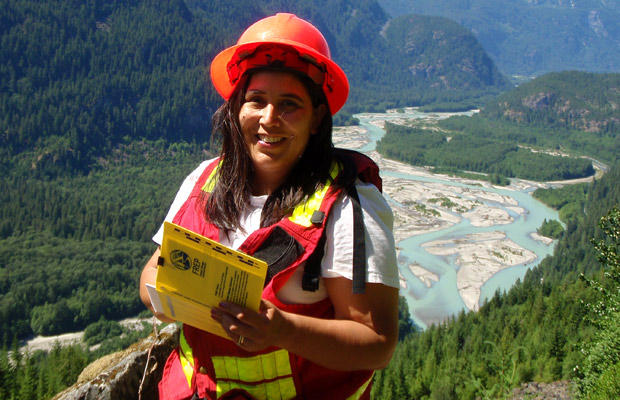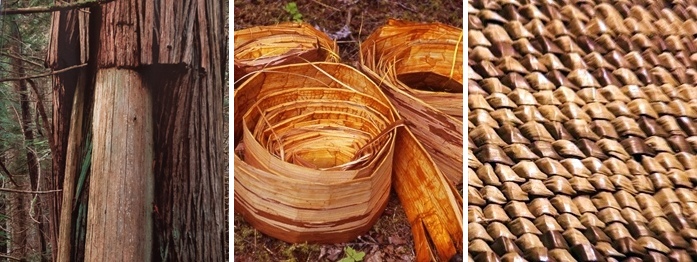Building Capacity to Sustain Indigenous Values in Forestry
In the current context of BC’s forestry sector, not enough is being done to incorporate Aboriginal visions of sustainability into policy and practice, a fact that has a direct and negative impact on Aboriginal people’s ability to exercise their rights (Wyatt, 2008). While the historical marginalization, disenfranchisement, and oppression of Aboriginal communities in Canada cannot be simply overcome by changes at the policy level, making Indigenous voices heard is an essential component of the reconciliation process, and is integral to the realization of “Indigenous resurgence” (Alfred, 2009). In order to mainstream Aboriginal rights and values in forestry, several steps must be taken to visiblize the connection between Indigenous culture and nature, bridge the ontological gaps between Western-Scientific and Indigenous paradigms, and clearly communicate Indigenous perspectives on sustainable land management. In the section that follows, this paper proposes three potential interventions that contribute to these aims: cultural competency training, inclusion of cross-cultural interpreters in the consultation process, and development of a guide to Aboriginal values in forestry authored by Indigenous peoples.
Cultural Competency Training
Cultural competence can be conceptualized as the ability to understand and respect values, attitudes, and practices that differ across cultures, and to consider and respond appropriately to them in interpersonal- and institutional-level interactions (National Center for Cultural Competence, n.d.). Improving foresters’ cultural competence through compulsory cultural competency training would increase their awareness of the interconnected nature of Aborignal culture, rights, and values, and would equip them with the skills necessary to approach cross-cultural differences in respectful and productive ways. Cultural competency training programs have already been established in BC – for example, the Provincial Health Services Authority offers an “Indigenous Cultural Competency Training Program” that aims to “strengthen the skills of those who work both directly and indirectly with Aboriginal people […] and promote positive partnerships” (Provincial Health Services Authority BC, n.d.). While this training is available online and is open to those in non-health related fields, a training program tailored to the specific needs of forestry professionals should be developed. If such a training program were established, the Association of BC Forest Professionals (ABCFP) would be a suitable body to oversee its implementation within the province, as all foresters who wish to practice in BC must be ABCFP members (ABCFP, 2006). Since the ABCFP has the power to dictate its criteria for membership, it is in a position to enforce cultural competency training as a mandatory component of foresters’ professional education. As the mandate of the ABCFP is to “ensure the competence, […] professional conduct and integrity of [it’s] members,” the establishment of a cultural competency program for BC foresters falls well within its range of institutional objectives (ABCFP, 2006). Ideally, all aspiring foresters would be required to complete the program in order to qualify for membership as Registered Professional Foresters (RPF’s), and all existing ABCFP members would need to complete the training in order to maintain their RPF designation.
Inclusion of Cross-cultural Interpreters in the Consultation Process
The consultation process is rife with misunderstandings, which often harm Aboriginal communities and prevent their voices from truly being heard (Newman, 2014). These misunderstandings often arise from differences between Western-Scientific and Indigenous ways of knowing and being, which are grounded in taken-for-granted assumptions about how the world works and how knowledge is created (Trosper, 2007). In order for development in forestry to respect the rights of Indigenous people, forestry professionals must have a clear understanding of Indigenous peoples needs, values, and visions of sustainability; however, these understandings may be obscured by fundamental differences in foresters and indigenous communities’ ontological and epistemological assumptions. For example, Booth and Skelton (2011) found that significant tension exists between traditional First Nations values and the values of commercial foresters working in the Tl’azt’en community, and that failing to reconcile these differences leads to inter-cultural conflict. The challenges of reconciling Indigenous and Western-Scientific worldviews are summarized by one Elder from the Tl’azt’en Nation: “Our cultural values are so important and we keep saying that it is so important. So you bring somebody in that is not aware of our true cultural values and they think of it in a totally different aspect, and they come in not understanding us and that’s where this conflict starts” (Booth & Skelton, 2011, p. 377).
In order to bridge Indigenous and Western-Scientific worldviews, cross-cultural interpreters (CCI’s) should play an active role in the consultation process. CCI’s would be present during all interactions between Aboriginal leaders and professional foresters, and would act as a liaison between the two parties. In this role, CCI’s would be responsible for explaining Indigenous perspectives and values to foresters working with Aboriginal communities, and for providing insight into the cultural and historical context surrounding these values in order to help foresters understand their significance. CCI’s would also help Indigenous communities understand foresters’ perspectives, the technical or legal terminology that they employ, and the rights and responsibilities of both commercial foresters and their own community. Therefore, CCI’s must be highly knowledgeable about both Indigenous and Western-Scientific worldviews, and would ideally be from the Indigenous community in which they work. This “positionality” would provide them with the “insider knowledge” necessary to mitigate insider-outsider tensions that frequently characterize consultation process (McKorkel & Myers, 2003; Minkler, 2004). Moreover, it would allow them to assume the role of “explicit advocates” for their communities, which would help neutralize the power imbalance that is often present in Indigenous-Settler relations (O’Neil, 1989).

Andrea Lyall, my Aboriginal Forestry professor and BC’s first female Aboriginal forester! (Vancouver Sun, 2010)
Development of a Guide to Aboriginal Values in Forestry
The Province of British Columbia has developed a series of online resources to guide proponents – such as commercial foresters – in engaging with Aboriginal communities during the consultation process (Province of BC, 2015). These resources include a Guide to Involving Proponents When Consulting First Nations; a Proponent: First Nations Engagement Communication Log; a document detailing Updated Procedures for Meeting Legal Obligations When Consulting First Nations; and, of particular interest, a fifteen-page report on Building Relationships with First Nations: Respecting Rights and Doing Good Business (Province of BC, 2015). While the Building Relationships report states several times that the land has cultural, social, spiritual, and economic importance to Indigenous peoples, and that the well-being of Indigenous communities is “intricately linked to the land,” it does not go further to explain how this significance relates to Aboriginal rights or how should be addressed in land management decisions (Province of BC, n.d.).This is due to the fact that the Building Relationships report is clearly written from a government-centric and industry-centric perspective; for example, it highlights the benefits to Industry from building relationships with First Nations (which include increased certainty, access to labor, services, and local knowledge, and support for government consultation), but fails to discuss the potential harms to First Nations communities from failing to engage with them in a respectful and meaningful way (Province of BC, n.d.).
These omissions should not be taken lightly, as the exclusion of Indigenous perspectives seriously detracts from the report’s potential to positively impact Indigenous-Proponent relations during the consultation process. Thus, either a separate guide to Indigenous values in forestry and land management should be developed, or such content should be incorporated into an amended version of the Building Relationships report. In both scenarios, the guide should be written by Indigenous authors, privilege Indigenous ways of sharing knowledge (such as story, myth, imagery, and metaphor), and explicitly link Aboriginal people’s ability to exercise their rights to their involvement in (and ideally sovereignty over) land management decisions. The widespread dissemination of such a guide to all foresters working with Aboriginal communities would provide a concrete and accurate point of reference for foresters engaged in the consultation process, reduce ambiguity surrounding the significance and manifestation of Indigenous rights and values, and provide a platform for Indigenous knowledge to be heard and honored by the forestry industry.

